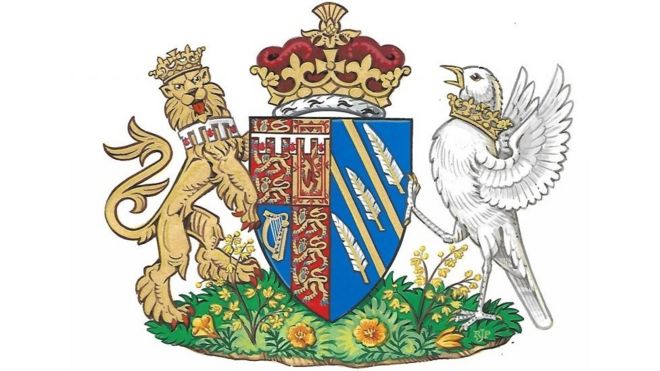There are, naturally enough, a number of carved stone armorial memorials in St. Margaret's Chapel, Westminster.
For example:
The inscription reads:
Mrs.
IUDITH CARY
departed ye
Life of
ye
Small Pox March
ye 11th
1714/5 in ye 23d Year
of Her Age:
and lies
Interr’d
near ys Place
by Her Father
ye
REUD.
EDWARD
CARY of
Clovelly
in the
County of
DEUON.
Erected to
Her memoy
by Her Friend
DAME
ANNE
CHESSHYRE
The arms of Cary are found in Burke's General Armory: Argent on a bend sable three roses argent (sometimes barbed and seeded proper). The Visitations of the County of Devon blazon the arms of Cary of Clovelly as: Argent on a bend sable three roses argent, a martlet for difference.
(Yes, I know that it looks like someone has at one time or another colored the field here as or, and the coat is so blazoned in The History of the Parish Church of Saint Margaret, in Westminster. Still, I have shared other coats of arms which have been miscolored before now, most notably this one: https://blog.appletonstudios.com/2009/02/youd-think-historians-would-do-better.html. Given that example, don't give me any static about this one!)
In case you are wondering, Clovelly, Devon, is in the west of southern England on the southern shore of Barnstaple or Bideford Bay, about one-third of the way between Hartland Point to the west and the city of Bideford to the east.
Edward Cary and his daughter Judith appear in The Visitations of the County of Devon Comprising the Heralds' Visitations of 1531, 1565, and 1620, with additions by Lieutenant-Colonel J.L. Vivian, with these entries:
Edward Cary, 4 son [of George Cary and Anne, née Handcock), named in the wills of his uncle [Sir Robert Cary] and father, a minor 1679, Rector of Silverton and Sub-Dean of Exeter at 26 years of age, d. 28 Dec. 1695, buried in St. Margaret's, Westminster.
Edward Cary married a daughter of Thomas Pointington of Penecot.
Judith [Cary], only child, d. 11 Mar. 1714-15, aged 23, of small pox, bur. in St. Margaret's, Westminster.
It is so sad to see a life taken so young.





























